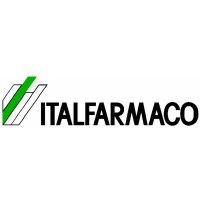预约演示
更新于:2025-05-07
HDAC Class I Inhibitor(Italfarmaco SpA)
HDAC Class I Inhibitor(意大泛马克大药厂)
更新于:2025-05-07
概要
基本信息
原研机构 |
在研机构 |
非在研机构- |
权益机构- |
最高研发阶段临床前 |
首次获批日期- |
最高研发阶段(中国)- |
特殊审评- |
关联
100 项与 HDAC Class I Inhibitor(意大泛马克大药厂) 相关的临床结果
登录后查看更多信息
100 项与 HDAC Class I Inhibitor(意大泛马克大药厂) 相关的转化医学
登录后查看更多信息
100 项与 HDAC Class I Inhibitor(意大泛马克大药厂) 相关的专利(医药)
登录后查看更多信息
125
项与 HDAC Class I Inhibitor(意大泛马克大药厂) 相关的文献(医药)2025-04-01·Gut
Pharmacological activation of STAT1-GSDME pyroptotic circuitry reinforces epigenetic immunotherapy for hepatocellular carcinoma
Article
作者: Zhou, Jingying ; Lu, Jiahuan ; Tong, Man ; Yang, Weiqin ; Tu, Yalin ; La Thangue, Nick ; Cheng, Alfred Sze-Lok ; Si-Tou, Willis Wai-Yiu ; Lin, Yingnan ; Liu, Yan ; Sun, Hanyong ; Zhong, Chengpeng ; Liang, Liying ; Wu, Haoran ; Chan, Stephen Lam ; Zhang, Lingyun ; Vong, Joaquim S L ; Ma, Stephanie ; Chen, Shufen ; Liang, Jianxin ; Xia, Qiang ; Leung, Howard ; Feng, Yu ; To, Ka Fai ; Chen, Siyun ; Liang, Zhixian ; Wong, Patrick Pak-Chun ; Sung, Joseph J Y ; Kerr, David ; Yin, Baoyi ; Kwong, Tsz Tung ; Xiong, Zhewen ; Ren, Weida ; Wang, Jing
2024-08-01·Journal of Ocular Pharmacology and Therapeutics
Inhibition of HDAC1 and 3 in the Presence of Systemic Inflammation Reduces Retinal Degeneration in a Model of Dry Age-Related Macular Degeneration
Article
作者: Singh, Sudha ; Schnabolk, Gloriane ; Husain, Shahid ; Obert, Elisabeth
2024-07-01·Journal of Investigative Dermatology
Romidepsin and Afatinib Abrogate Jak–Signal Transducer and Activator of Transcription Signaling and Elicit Synergistic Antitumor Effects in Cutaneous T-Cell Lymphoma
Article
作者: Albero, Robert ; Laurent, Anouchka P ; Palomero, Teresa ; Geskin, Larisa ; Reglero, Clara ; Miller, Hannah ; Ma, Cindy ; Shih, Bobby B ; Cortes, Jose R ; Mackey, Adam ; Quinn, S Aidan ; Ferrando, Adolfo A
100 项与 HDAC Class I Inhibitor(意大泛马克大药厂) 相关的药物交易
登录后查看更多信息
研发状态
10 条进展最快的记录, 后查看更多信息
登录
| 适应症 | 最高研发状态 | 国家/地区 | 公司 | 日期 |
|---|---|---|---|---|
| 纤维化 | 临床前 | 意大利 | 2024-07-21 |
登录后查看更多信息
临床结果
临床结果
适应症
分期
评价
查看全部结果
| 研究 | 分期 | 人群特征 | 评价人数 | 分组 | 结果 | 评价 | 发布日期 |
|---|
No Data | |||||||
登录后查看更多信息
转化医学
使用我们的转化医学数据加速您的研究。
登录
或

药物交易
使用我们的药物交易数据加速您的研究。
登录
或

核心专利
使用我们的核心专利数据促进您的研究。
登录
或

临床分析
紧跟全球注册中心的最新临床试验。
登录
或

批准
利用最新的监管批准信息加速您的研究。
登录
或

特殊审评
只需点击几下即可了解关键药物信息。
登录
或

Eureka LS:
全新生物医药AI Agent 覆盖科研全链路,让突破性发现快人一步
立即开始免费试用!
智慧芽新药情报库是智慧芽专为生命科学人士构建的基于AI的创新药情报平台,助您全方位提升您的研发与决策效率。
立即开始数据试用!
智慧芽新药库数据也通过智慧芽数据服务平台,以API或者数据包形式对外开放,助您更加充分利用智慧芽新药情报信息。
生物序列数据库
生物药研发创新
免费使用
化学结构数据库
小分子化药研发创新
免费使用
